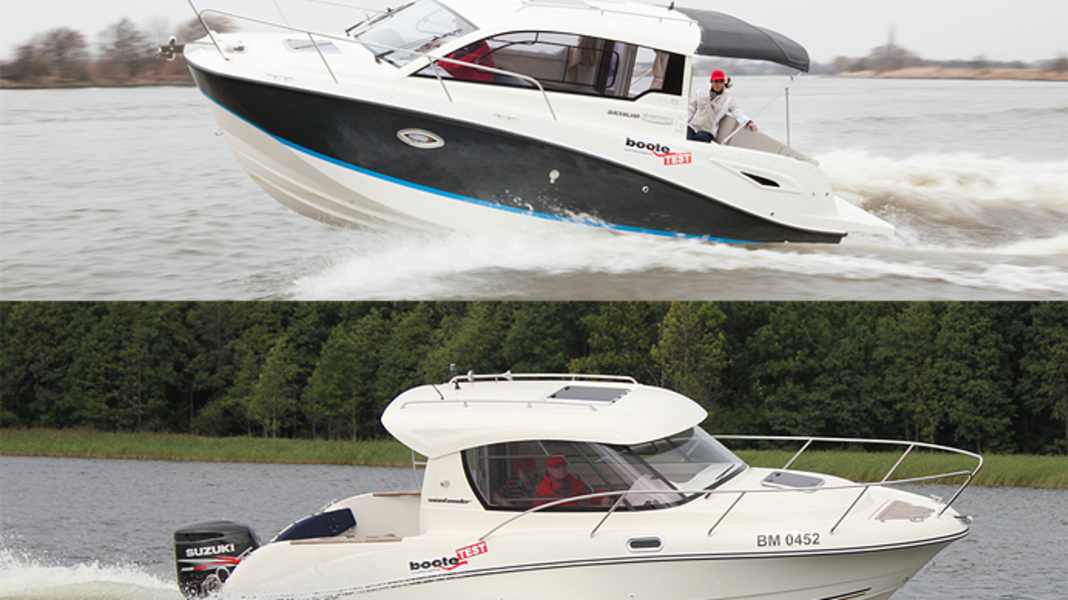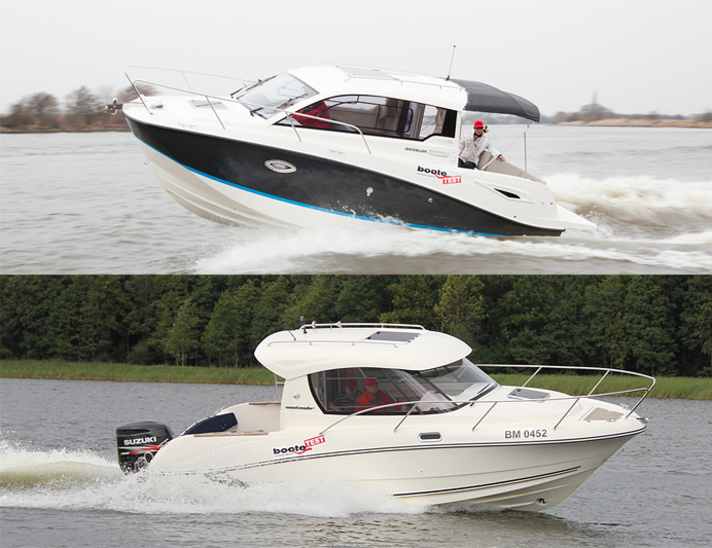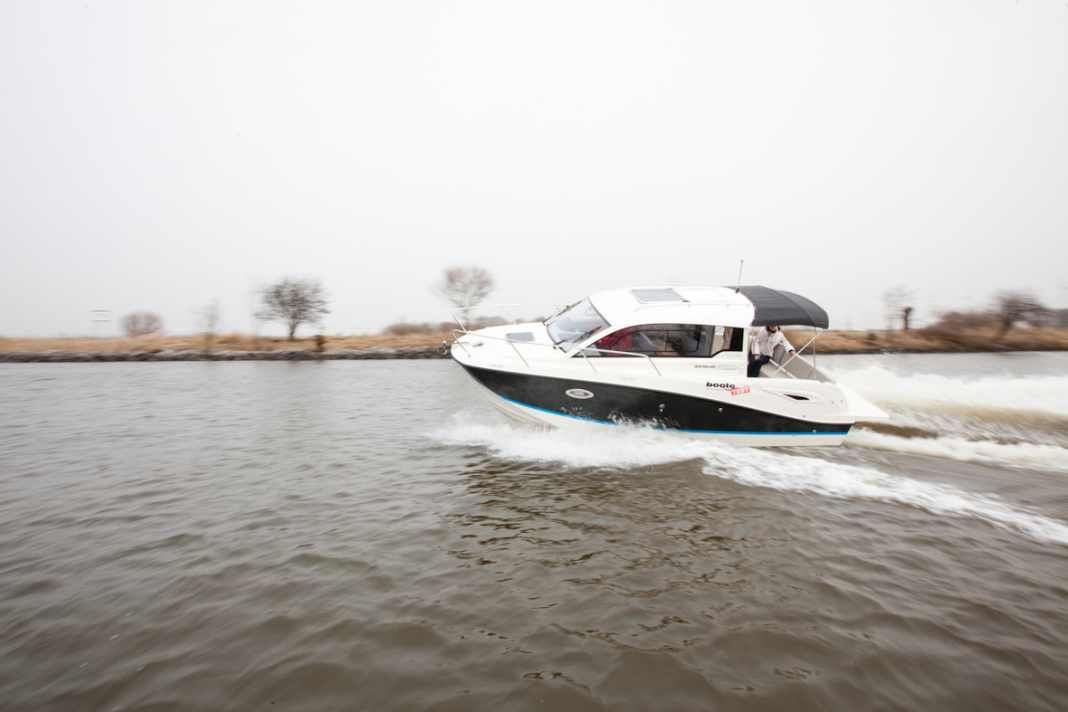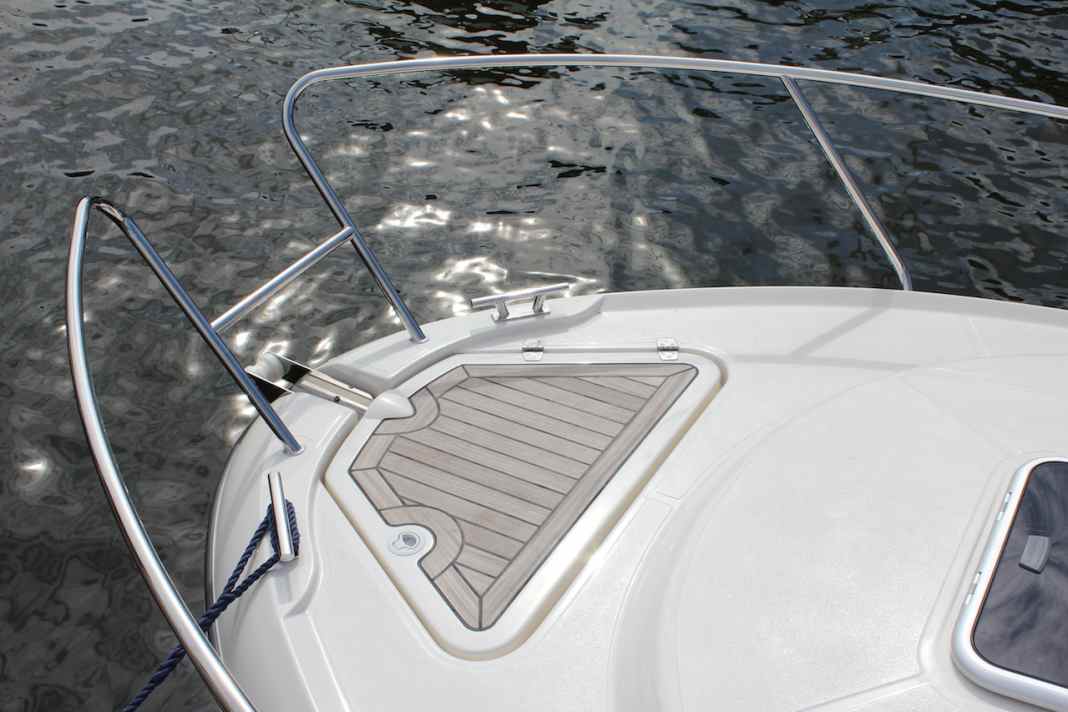

Take a double bow berth, a dinette, a small wet room, a galley block and a steering position and put a roof on top: the Sting 700 and the Quicksilver 705 are finished. To make them real cabin cruisers, the lower deck area has been raised so high that some of them have a headroom of over 2.00 metres.

Quicksilver offers a bow berth measuring 1.70 x 1.70 metres minus the toilet room in the entrance area. Mirage, on the other hand, goes the way of the classic double berth with 1.38 x 1.85 metres. The dinette is almost identical at 0.95 x 180 m (Quicksilver) and 0.87 x 1.80 m (Sting) - which also applies to the cockpit sizes with an area of around 3.4 square metres. Only the length-to-width ratio is slightly different (see table). In terms of sunbeds, Mirage has the edge with 0.18 m more width and 0.47 m length.

The biggest difference between the test candidates is the type of engine: the Sting is powered by an outboard, the Quicksilver by an inboard. However, Quicksilver fans should know that the Activ 705 is also available as an outboard model (max. 200 hp).






There are no problems transporting the Quicksilver overland if you have a towing vehicle with a towing capacity of 3.0 tonnes and a suitable trailer. With the Sting 700 it can be about
700 kg less.
The full comparative test can be found in BOOTE 10/12.






Data sheet: Quicksilver Activ 705
Shipyard: Quicksilver
Type designation: Quicksilver Activ 705
CE category: C - Coastal waters
Material of hull and deck: Plastic
Length: 7,60 m
Width: 2,55 m
Displacement: 2,50 t
Price: 47.800,00 €
Data sheet: Mirage Sting 700
Shipyard: Mirage Boats
Type designation: Mirage Sting 700
CE category: C - Coastal waters
Length: 6,98 m
Width: 2,49 m
Displacement: 1,80 t
Price: 50.800,00 €
